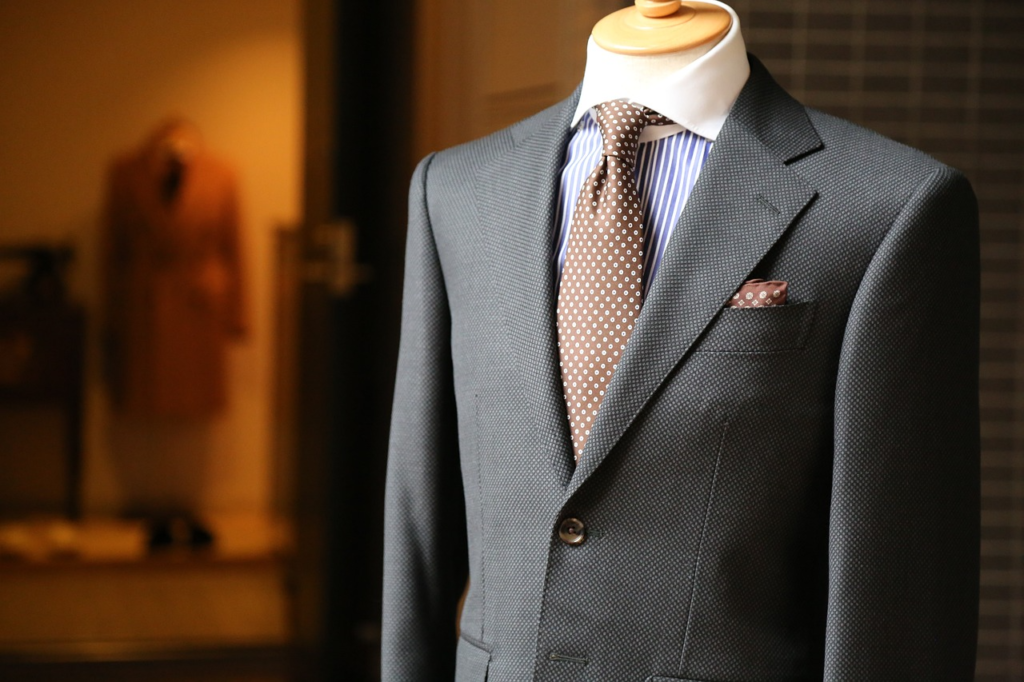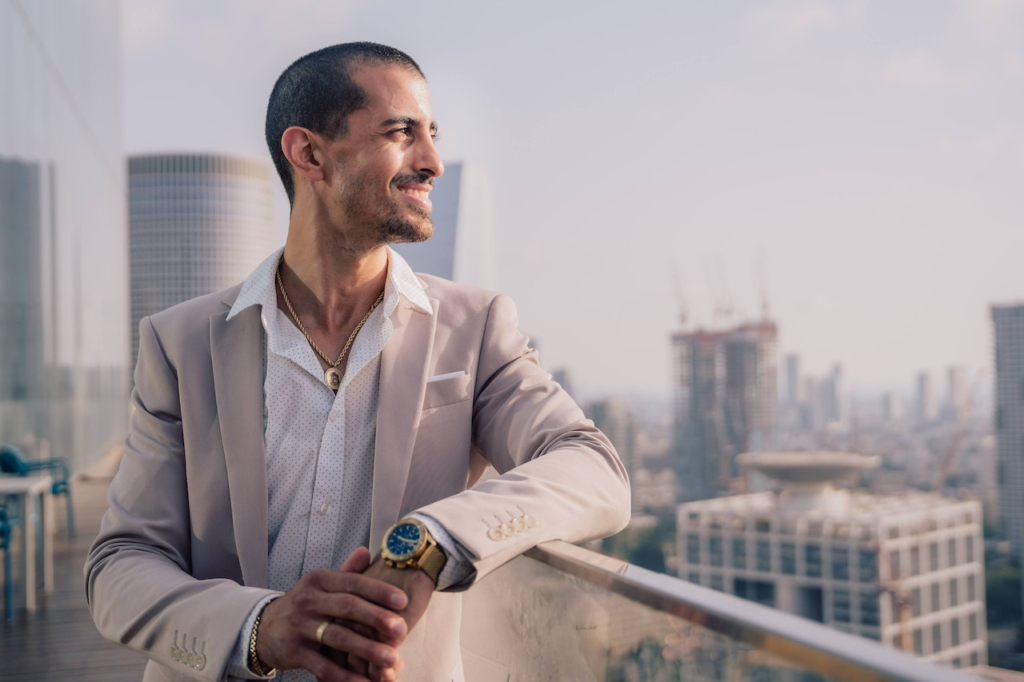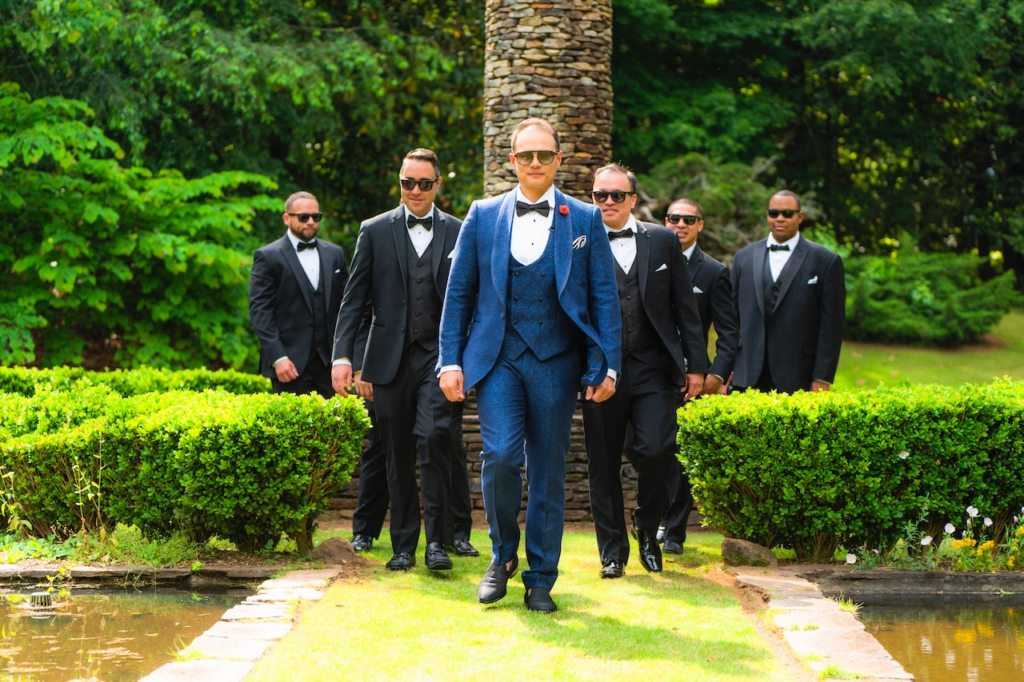
They say that clothes make the man, and there’s definitely some truth to that. The way you dress can have a big impact on how you’re perceived by others, both in your personal life and your professional career. Whether you’re heading to a job interview or a night out with friends, making sure you look your best can help boost your confidence and make a great first impression.
There’s no one-size-fits-all approach to dressing well, of course. Some people prefer more casual looks, while others like to go all-out with formal wear.
But no matter what style you choose, there are certain principles that apply across the board – things like fit, color coordination, and attention to detail. In this article, we’re going to focus on one particular aspect of dressing well: bespoke tailoring.
If you’ve never heard of this term before, don’t worry – we’ll cover everything you need to know about it in the next few sections. Suffice it to say for now that bespoke tailoring is one of the best ways to elevate your style and create a look that’s truly unique and tailored (pun intended) to your own preferences.
The Basics of Bespoke Tailoring

The Definition of Bespoke Tailoring
Bespoke tailoring is the epitome of sartorial elegance. It’s the ultimate luxury in men’s clothing, where an outfit is made to measure with the utmost precision and care. A bespoke suit is made completely from scratch for an individual client, taking into account their unique body shape and style preferences.
It’s a traditional craft that has been around for centuries, and it’s still highly coveted today. What sets bespoke tailoring apart from off-the-rack clothing is the level of customization that goes into each garment.
With bespoke tailoring, you have complete control over every aspect of your suit, from the fabric to the buttonholes. This means that each piece is truly one-of-a-kind and tailored specifically to your measurements.
The Process of Getting a Bespoke Suit Made
The process of getting a bespoke suit made can be daunting at first, but it’s well worth it in the end. It typically involves multiple fittings over several weeks or months until the garment fits perfectly.
Here are some key steps involved in getting a bespoke suit made: First, you’ll need to find a reputable tailor who specializes in bespoke suits.
They will guide you through the process and help you make decisions about fabric selection and style details. Next comes measurement-taking – this includes taking precise measurements around various parts of your body to ensure a perfect fit.
After this initial fitting, your tailor will create what’s known as a “muslin” version of your suit – essentially a rough mock-up – which will be used to fine tune all future iterations. Then comes choosing all aspects of fabrics including its color weight & texture- making sure everything flows together cohesively as well as pleases individual tastes
after all details are decided upon & agreed upon by oneself & the tailor, the final product is produced. A suit that looks & feels like no other.
Overall, bespoke tailoring is a highly personalized experience that produces a unique and sophisticated result. It takes time and patience, but the end result is something truly special that will last for years to come.
Choosing the Right Fabric

The Many Fabrics of Bespoke Suits
When it comes to bespoke suits, there are a wide variety of fabrics to choose from – each with its own unique look and feel. Wool is the most common fabric used for suits and is known for its durability and versatility.
Cashmere, on the other hand, is a luxurious option that is incredibly soft to the touch but can be quite expensive. Silk is also commonly used in bespoke tailoring and is perfect for special occasions due to its elegant sheen.
Other popular fabrics include linen, which is ideal for warmer climates, and cotton, which offers a comfortable but structured look. There are also more unconventional options such as velvet or corduroy that can add texture and personality to your suit.
Factors to Consider
While it’s important to choose a fabric that aligns with your personal style preferences, there are other factors you should take into consideration when selecting a fabric for your bespoke suit. Firstly, climate plays an important role in determining what type of fabric would work best. If you live in an area with hot or humid weather conditions, lighter weight fabrics such as linen or tropical wool would be more suitable compared to heavier options like tweed or flannel.
Secondly, the occasion will also help dictate what type of fabric you should choose. For formal events such as weddings or black-tie galas, silk or cashmere suits would be appropriate compared to casual occasions where cotton or linen would be more fitting.
Personal style should also factor into your decision-making process. Do you prefer classic looks or bold patterns?
Are you drawn towards neutrals or brighter colors? All of these aspects can help guide you towards choosing a fabric that aligns with your individual taste.
Selecting the right fabric when getting a bespoke suit made can make all the difference. By understanding the different types of fabrics available and considering factors such as climate, occasion, and personal style, you can be sure to choose a fabric that enhances your overall look and ensures your comfort.
Why Fit is So Important in Bespoke Tailoring
When it comes to bespoke tailoring, fit is everything. The whole point of getting a suit made to measure is so that it fits you perfectly, and that’s exactly what you should expect. A well-fitted suit not only looks better but feels more comfortable as well.
It gives you confidence and makes you stand out from the crowd. A suit that doesn’t fit properly can be a complete disaster.
If it’s too big, you’ll look sloppy and unprofessional, while a suit that’s too tight will make you uncomfortable and restrict your movement. Even if everything else about the suit is perfect, if the fit isn’t right, it won’t do you any favors.
How a Tailor Will Ensure That a Suit Fits Perfectly in All Areas
Getting the perfect fit in a bespoke suit requires attention to detail and precision measurements. A tailor will take numerous measurements of your body to ensure that every part of your suit fits just right. They’ll take into account things like shoulder slope, arm length, chest size, waist size, hip size, thigh size and more.
Once they have these measurements down pat, they’ll get started on creating your suit pattern specifically for your body shape. Then comes the first fitting where they will ensure that the jacket shoulders sit perfectly on top of yours without any gaps or pulling when buttoned up (which indicates improper shoulder slope) and adjust as necessary.
A good tailor will also take note of how well your sleeves fall around your wrist as well as adjust for any waist suppression needs for an hourglass figure or less fabric needed for someone with an apple shaped build. All these detailed adjustments are made to ensure maximum comfort while still giving off an air of sophistication when dressed up in formal wear – ultimately making this investment worth every penny.
Customizing Your Suit

The Impact of Customization on the Overall Look of the Suit
When you invest in a bespoke suit, you want it to look and feel like it was made just for you. That’s where customization comes in. By choosing specific details and features, you can create a suit that not only fits perfectly but also looks amazing.
From the lapel style to the button stance, there are countless options for customizing your bespoke suit. Each detail can have a significant impact on the overall look of your suit.
For example, choosing a peak lapel instead of a notch lapel can make your suit appear more formal and sophisticated. Meanwhile, opting for a single button stance rather than double-breasted buttons creates a sleeker and more modern silhouette.
Options for Customizing Your Bespoke Suit
The options for customizing your bespoke suit are virtually endless. Here are some of the most popular: – Lapels: The lapel is one of the most noticeable aspects of any jacket or blazer.
There are three main types of lapels: notch, peak, and shawl. Each has its own unique look and feel.
– Buttons: The number and placement of buttons can completely change the appearance of your suit jacket or blazer. You can choose from single-breasted or double-breasted styles as well as different button configurations.
– Pockets: Depending on your needs and preferences, you may want to customize the pockets on your suit jacket or pants. – Vents: A vent is an opening in the back of a jacket that allows for greater range of motion while still looking sharp.
– Cuffs: Personalized cuffs are another way to add some individuality to your bespoke suit. Options include working cuffs (which allow you to unbutton them) or decorative cuffs (which cannot be unbuttoned).
Express Yourself with Your Bespoke Suit
When it comes to customization, the sky’s the limit. Take the time to think about what you want your suit to say about you and your personal style. Do you prefer classic and traditional looks, or are you more drawn to modern and edgy styles?
Whatever your preferences may be, bespoke tailoring allows you to fully express yourself through your clothing. Remember that every detail counts.
By carefully considering each aspect of your bespoke suit, from the fabric and fit to the customization options, you can create a garment that truly reflects who you are as a person. So go ahead and get creative – there’s no wrong way to customize your bespoke suit!
Caring for Your Bespoke Suit

Dry Cleaning vs Spot Cleaning: What’s the Difference?
Taking care of a bespoke suit can be daunting, especially if you’ve invested a lot of money into it. One of the first things you’ll need to decide is whether to dry clean or spot clean your suit.
Dry cleaning involves a chemical process that removes dirt and stains, while spot cleaning simply involves gently cleaning specific areas of your suit. While dry cleaning may seem like the go-to option, it can actually be damaging to your bespoke suit in the long run.
The chemicals used in dry cleaning can cause the fabric to weaken and wear down over time. As a result, we recommend spot cleaning as often as possible and only resorting to dry cleaning when absolutely necessary.
How to Spot Clean Your Suit
Spot cleaning involves using gentle cleansers and techniques to remove stains from specific areas of your suit. Begin by identifying the type of stain you’re dealing with (e.g. oil-based or water-based) and selecting an appropriate cleanser. For oil-based stains, you’ll want to use a solvent-based cleaner (like white vinegar or rubbing alcohol).
For water-based stains, on the other hand, stick with water-soluble cleaners (like dish soap or laundry detergent). To begin spot cleaning, mix together your chosen cleaner with some warm water and apply it gently to the affected area with a clean rag or sponge.
Be sure not to rub too hard as this could damage the fabric. Once you’re done spot-cleaning, hang your suit up in a well-ventilated area until it’s completely dry.
Additional Tips for Caring for Your Bespoke Suit
In addition to proper cleaning techniques, there are several other things you can do to ensure that your bespoke suit lasts as long as possible: – Invest in a steamer instead of ironing your suit. Ironing can damage the fabric and compromise the fit.
– Store your suit properly when you’re not wearing it. Hang it in a well-ventilated area with plenty of space around it to prevent wrinkles and creases.
– Rotate your suits regularly so that each one gets a chance to rest and recover from wear. This will help extend the life of all your bespoke suits overall.
By following these simple tips, you’ll be well on your way to caring for your bespoke suit like a pro. Remember: taking care of your clothes is an investment in yourself and in the quality and longevity of your wardrobe.
The Perfect Gentlemen

Bespoke tailoring is a worthwhile investment for any man looking to elevate his style game. By choosing a fabric that suits your style and climate, getting a perfect fit, and customizing the suit to your liking, you can create a unique look that will make you stand out in any setting.
It’s important to remember that bespoke tailoring is an art form that takes time and skill. Don’t rush the process or settle for less than you deserve.
A well-made suit will last you years and be worth every penny. By investing in bespoke tailoring, you’re not just buying a suit – you’re investing in yourself.
The confidence that comes with looking sharp can impact every aspect of your life, from personal relationships to professional opportunities. So go ahead, be the sharp-dressed man you were meant to be!